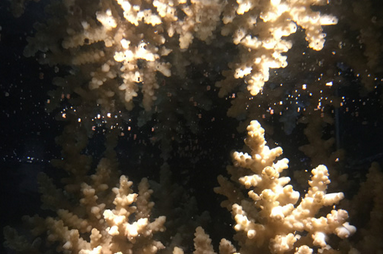Media release
From: Monash UniversityAn international study led by Monash University scientists has found that the distance travelled by marine larvae is dictated by both biological and physical constraints – contradicting previous hypotheses based on biology or physics alone.
The study is published today in the prestigious journal Nature Ecology & Evolution.
Marine invertebrates face many challenges when it comes to reproduction.
Sperm and sometimes eggs are released into the water where they must meet-up to allow fertilisation to take place.
These fertilised embryos develop into larvae and remain in the water column until they find a suitable spot to settle. The amount of time they spend in the water column and the distances they travel can be vastly different for different species.
Corresponding author Postdoctoral Research Fellow Dr Mariana Alvarez-Noriega and Professor Dustin Marshall, both from the Monash School of Biological Sciences’ Centre for Geometric Biology, have been working with colleagues from the United States to examine existing data to help them grasp how larval dispersal distance changes on a global scale.
“Recent exploration of this question has focused on the role of temperature on larval development, developmental mode (feeding or non-feeding larvae), maternal investment into egg size and hydrodynamics,” Dr Alvarez-Noriega said.
“But these factors are often considered separately rather than together.”
Higher temperatures speed up larval development so larvae in the tropics may spend less time in the plankton and disperse less far. But to complicate things, larvae in the tropics are more likely to be feeding larvae which means they tend to spend more time in the plankton than their non-feeding counterparts. Plus, mothers in cooler climes tend to invest more energy into their eggs which for non-feeding larvae means more time in the plankton for those that live at higher latitudes.
The research team analysed data from 766 marine invertebrate species and classified the larvae into feeding or non-feeding. They extracted data on egg size and the time spent in the plankton, plus the latitude and longitude of the recorded observation.
They were then able to use statistical models to estimate planktonic duration at different latitudes by incorporating their data on development mode and egg size.
“To our surprise, we didn’t find that dispersal distances were shorter in the tropics,” Professor Marshall said.
“Instead, we found that the faster surface current speeds in the tropics overcame the effects of temperature on larval development time. So, even though larvae spend less time in the plankton they still have the potential to disperse further than we predicted due to the faster current speeds.”
The team found that larvae travel further at high (near the poles) and low (near the equator) latitudes, that is, the tropics and the poles. Dispersal distances were shortest in temperate regions, found at mid-latitudes, where the time spent in the plankton is intermediate and current speeds are slower.
Species richness is greater in the tropics but the study suggests this pattern is not driven by larval dispersal as has been previously suggested.
“Understanding patterns in larval dispersal is essential for understanding patterns in marine biodiversity and managing our marine systems,” Professor Marshall said.
“Without this, we will struggle to adequately design marine protected areas, effectively manage biological invasions and predict the consequences of climate change,” he said.


